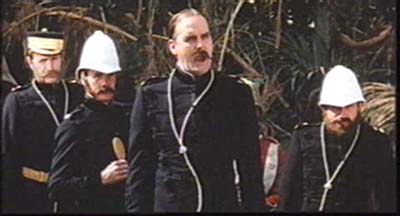Archives were searched, journals read and the odd book discovered. For the discerning strategist, the following detail is provided. Note that the UK never committed such plan to paper, but some good guesswork assessed their likely operations.
Pre Conflict Comparison
The Royal Navy had slightly more naval power, with the main battle line spread between the Home Fleet and the Mediterranean. It would be able to rapidly concentrate and venture across the Atlantic to have significant presence at Nova Scotia within 13 days. In comparison, the bulk of the US Navy battlewagons were in the Pacific and the timely use of the Panama Canal was critical in being able to face off against the British fleet in the Atlantic.
Royal Navy US Navy
Battleships 16 18 (12 in the Pacific)
Battlecruisers 4 0
Aircraft Carriers 6 3 (larger capacity than RN equivalents, all in the Pacific)
Cruisers 62 18
Destroyers 175 221
Submarines 57 68
Air Force strength was significantly in favour of the British, though redeploying it to Canada would take significant sea lift capacity. The British could muster such lift capacity but it would have to be balanced with other priorities, such as ground forces.
RAF US
Fighter Squadrons 12 3 Pursuit, 2 Attack
Observer Squadrons 5 9
Bomber Squadrons 11 2
Manpower wise, the British Army could rapidly mobilise more soldiers from across their dominions than the US, but the US could build a greater land force over time.
British Empire
Regular Forces 100,000 man Expeditionary Force (4 Divisions, 2 Cavalry Brigades)
Deployable to Nova Scotia within 30 days
Overseas Forces Canada: 52,000 (increasing to 120,000 in 11 Divisions in 30 Days)
India and ANZAC forces: 13 Divisions available at short notice
Territorial Army 13 Divisions available within 6 months
Regular Forces 100,000 men at home,
9 Divisions
Overseas Forces 40,000 in Panama, Philippines, Puerto Rico and Hawaii
National Guard 175, 000 (60 days to mobilise)
18 Divisions (understrength), 9 Cavalry Brigades
More to Follow...



7 comments:
Really interesting stuff. Looking forwards to reading more!
Keep it up. From reading the plane myself, the biggest problem I found with the US plain.
At least from what I saw, was that the plane seemed to awesome that the US would have time to fully mobilize unopposed.
If you haven't already accessed it, you might find this useful;
http://www.history.army.mil/books/AMH-V2/PDF/Chapter02.pdf
Interestingly it gives the 9 U.S. regular divisions the same strength as 3 'real' divisions, so each division was only maintained at brigade strength.
Also remember that there was no separate 'Air Force' and the personnel of the 'The Army Air Corps' could be included in the army totals by some sources .
Thank you for the link Jim
Can't trust those yanks. :)
There are some terrific what ifs here. One thing that would be interesting to know is the strength and locations of US coastal artillery, as it would have been tempting for the US Atlantic fleet to shelter under their land-based batteries until the Pacific Fleet could arrive. Otherwise you would likely have seen the RN sink or scatter the Atlantic fleet and then bombard cities along the US east coast, assuming that the RN would have been willing to brave land based artillery, mines, torpedo and destroyer boats and land based aviation.
Damnation, now I want to go and buy this:
http://www.avalanchepress.com/gamePlanRed.php
Great post. MP
Thanks for the comments everyone- I'll follow this post up with other shortly.
Commissarmoody - wait until a future instalment...!
Thanks for the link Jim- interesting
Michael - good point, but the coastal forts were mostly about denying use of strategic ports so harassing bombardments would still be effective, though you are right; the RN could not afford to loose ships to damage so far from home
More to follow chaps!
Post a Comment